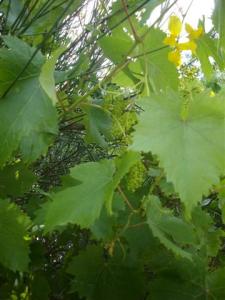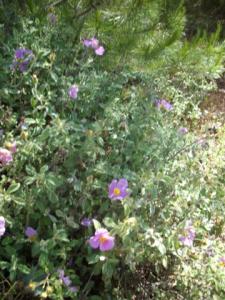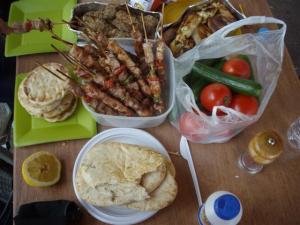These photos were taken on June 5 during an one day trip to Parnitha mountain that was organized by my son’s school parents association …
Agavanos (Notobasis syriaca) is a wild artichoke -like plant. Tender shoots are peeled and eaten raw or boiled and seasoned with olive oil and lemon juice.
There is a wild vine growing in this area….
With a little patience grapes will be ready for verjuice.
On a hot summer day If you will collect some leaves of rock rose (Cistus creticus) a fragrant resin will stick to your hands. Rock rose is an aromatic plant that has used since ancient times to produce labdanum, an oleoresin that is of great importance in perfumery. The best material is collected from Cistus creticus ssp creticus which grows plentiful in Crete. Dioscorides (De Materia Medica A,97) described its gathering by brushing the shrub with straps, a system still employed in Crete as you can see if you’ll click here http://www.youtube.com/watch?v=PKh46zl55qA&NR=1 and here http://www.youtube.com/watch?v=tsNGV8xGfwA
On our way we visited a monastery… We expected to see a Byzantine monastery but this was an ugly modern building. However, most Greek monasteries have lovely yards filled with roses, rose-scented pelargonia and basil in pots.
The strongly rose-scented leaves of pelargonium graveolens are used in quince spoon-sweet, lukums, creams and ice-cream.
Of course, you cannot imagine Greek summer without the sweet scent of basil.
Of course,
It is not a surprise that the walk in the forest followed by a barbecue…
Ah June! the month that black mulberries are darken. Sweet, already. What a good company we had!
For Greek click here











